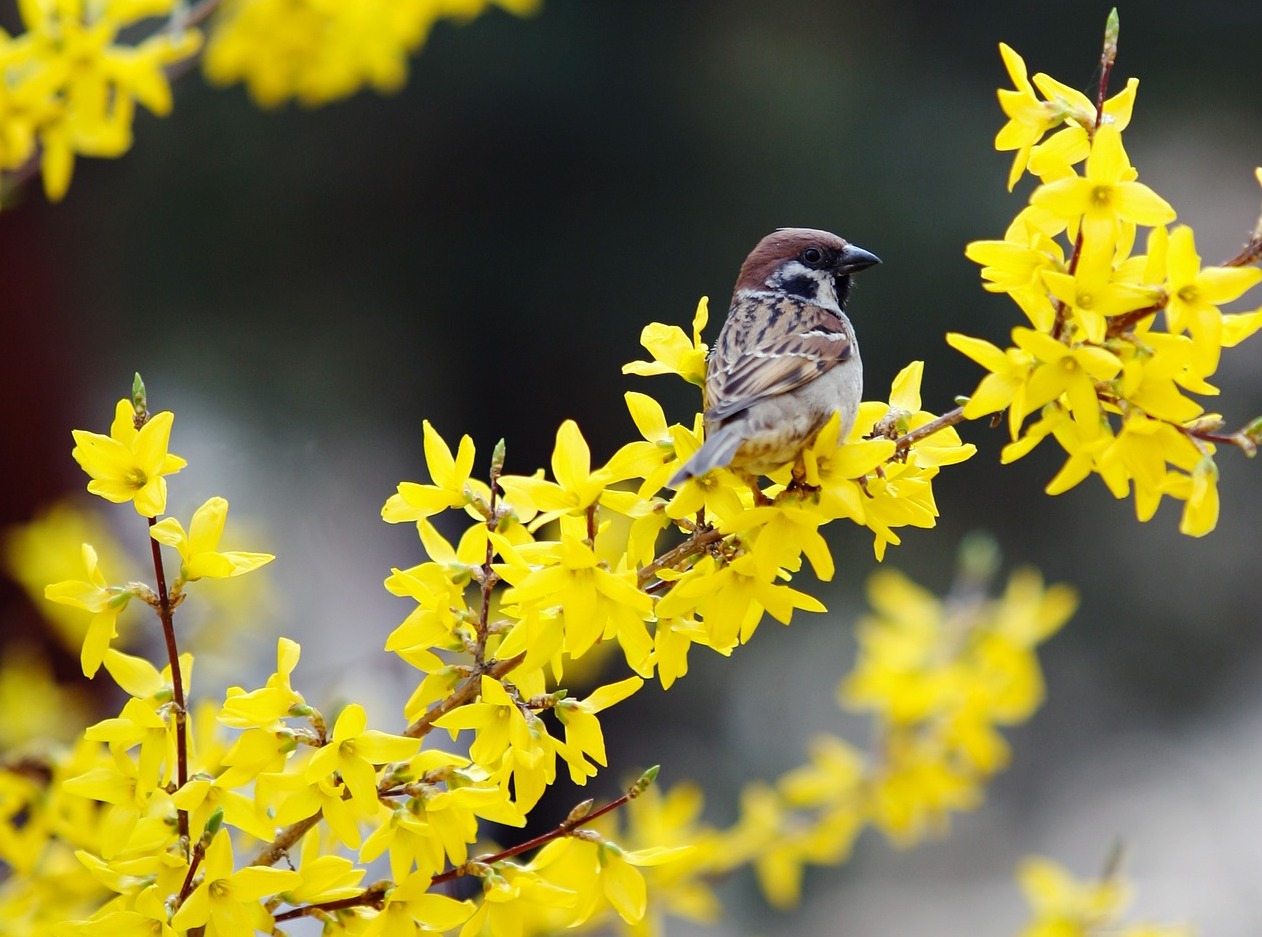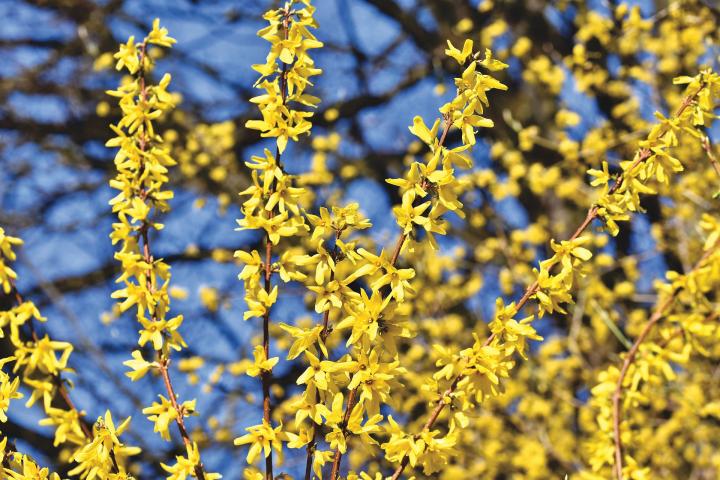The bright yellow flowers of the forsythia bush are one of the earliest blooms of spring, adding cheerful color to the still-sleepy landscape. Learn all about planting, growing, and caring for forsythia!
About Forsythia Bushes
Forsythia are deciduous, fast-growing, adaptable shrubs known for their cheery yellow blooms in early spring. In full flower, they’re hard to miss!
Although this shrub has become naturalized in much of Europe and North America, its ancestors hail mostly from East Asia—namely China and the Korean Peninsula—as well as one species from Europe.
As landscape plants, forsythia are suitable for planting in a good part of the continental United States; species and hybrid crosses are hardy from Zone 3 to Zone 8. See our Recommended Varieties below.
The forsythia shrub not only makes a vigorous border or backdrop for any yard, but also attracts bees, birds, and butterflies. Their long, arching branches can give them a wild look, but a good pruning will keep them in check.













Comments